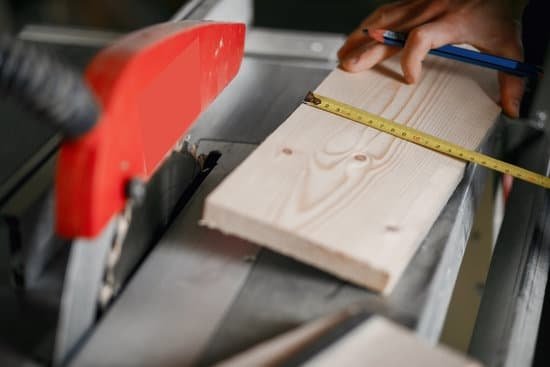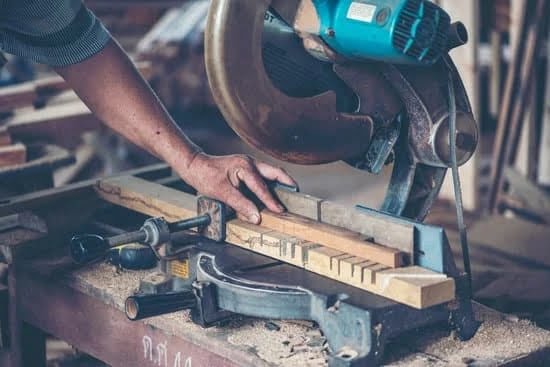Introduction
Having a heated woodworking shop offers a number of benefits. Firstly, heating can make the workspace much more comfortable, with the temperature and humidity levels stable enough to work in without any discomfort. Secondly, with an environment that’s properly regulated, it enables the woodworker to be much more efficient while working, without worry of distraction due to external conditions. Thirdly, a conditioned space increases safety by reducing the chances of injury associated with cold temperatures or high humidity leading to slips and fading wood. Finally, heated woodworking shops can also save money in the long run because they’re less vulnerable to external environmental conditions such as cold weather or extreme heat.
Types of Heating Systems
Electric Heating System: In an electric heating system, the heaters are powered by electricity and use electrical components to help circulate heated air into the shop. Generally, these systems consist of baseboard heaters and/or radiant ceiling panels. A thermostat is used to control the temperature of the room while circulation fans are used to disperse the warmth evenly throughout the workspace.
Gas Heating System: Gas heating systems typically involve a furnace or boiler which produces heat through burning natural gas or propane fuel. These furnaces are connected directly to existing ductwork in order to distribute warm air throughout the woodworking shop. Heat pumps can also be utilized in gas heating systems, though this would require a compressor and evaporator coil for extra efficiency.
Propane Heating System: Propane heating systems can utilize either forced-air or hydronic (hot water) heating. Forced-air propane heaters are usually vented through a regular chimney flue while high-efficiency sealed combustion models require no venting at all. Hydronic propane heaters are usually installed when permanent piping needs to be placed within walls, floor or ceilings of your workspace–these systems tend to be more efficient than standard electric or gas forced-air systems as they need little maintenance and emit far less noise when in operation.
Wood Stoves: Wood stoves are great for supplying localized warmth in a woodworking shop, however, there can be safety risks if you don’t have proper ventilation and insulation for them. Still, wood stoves can provide fast and reliable heat without much upfront investment as well as provide character and ambiance to your workspace that you won’t get from any other system.
Boilers: Boilers use heated water rather than air for supplying warmth inside your woodworking shop–this means a more consistent temperature without suffering from cold drafts experienced with other methods like direct ventilation from outside sources. Boilers are generally powered by natural gas but some models may even come equipped with solar panels which further reduces any environmental impact made as well as its own energy costs over time!
Heat Pumps: Heat pumps function similar to traditional air conditioners but instead of blowing cool air into your shop they will blow hot air extracted from outside sources such as ponds or groundwater wells. This makes them incredibly efficient in terms of energy usage since no additional fuel is necessary–just electricity to power their engine! Additionally, they do not release any emissions nor do they contribute towards global warming at all so they definitely deserve recognition despite having slightly higher upfront costs than other forms of heating solutions available today.
Pros and Cons
Heating System Pros Cons
Gas Furnace • Lower cost to run than electric furnace.
• Easy to install and maintain.
• More efficient than wood stove. • Can create a risk of fire or carbon monoxide poisoning if not installed correctly.
• Regulation and monitoring is easier with gas furnace than with wood stoves.
Wood Stove • Produces warm, comfortable heat.
• Provides a unique and attractive look to the shop, as well as an ambient smell of burning wood.
• Simple installation and maintenance • High initial cost compared to installing a gas furnace.
• Low efficiency compared to more modern types of heaters, causing additional costs in fuel over time.
Installing a Heater
Step 1: Assess the space
Before purchasing a new heater, it is important to assess your woodworking shop. Make sure you know the size of the area you are trying to heat so that you can purchase a unit with enough power to effectively heat the shop to comfortable temperatures. It is also important to consider any natural barriers such as walls or doors that may reduce the amount of heat flowing into certain areas because these can affect how effective your heater will be.
Step2: Choose an Appropriate Heating Unit
Once you have assessed your space, you can begin shopping for an appropriate heating unit for your workshop. There are many options available depending on your particular needs and budget. Some of these include gas-fired units, electric units, radiant systems and forced-air systems. Consider factors such as cost, fuel type and efficiency when selecting a heater for your shop.
Step 3: Choose an Installation Location
The installer must select an appropriate location for installing the heating unit in order to ensure adequate air flow and ventilation in order to prevent overheating or fire hazards. Common installation locations include walls and floors which should be as close as possible to the vents in order maximize circulation throughout the workshop. Keep in mind that installing too close to combustible items could lead to hazards so be sure to follow all safety regulations when marking out the placement of your heater.
Step 4: Ready Your Shop For Installation
Once you have chosen an installation location and prepared materials necessary such as tools, screws or anchors that may be needed make sure that any wiring or pipes are secure before installation begins. If there needs to be some drilling done or furniture needs moved make sure that everything is positioned back properly when finished so that it won’t interfere with installation or functioning of the heating unit once installed.
Step 5: Install The Heater Unit And Secure Ventilation
Follow manufacturer instructions for wiring up and connecting ducts for gas units, then use a leveler tool if necessary for optimal mounting before attaching brackets securely into place with bolts or screws. Be sure all fittings are snug within their respective holes before turning on electrical components such as switches and fans which will assist with proper venting of exhaust fumes from inside the building safely outside since most gas-powered units do produce some kind of emissions during operation (carbon monoxide being one example). Now take diagrams from manufacturer instruction manual regarding actual placement of parts related to heating unit such as few illustrations showing intake and outlet ducts where they need installation over body of heater while fan has been included separately near bottom part of it etc., then fix them together according John’s method using nuts/bolts/screws etc., after following step by step directions written on them respectively; Lastly double check connections if required again; then switch on power supply incoming electricity connection point so as turn on unit ready with its usage now ahead!
Maintenance and Replacement
Maintaining your woodworking shop’s heating system is just as important as any other part of the shop. It is important to regularly inspect, clean and test components for proper functioning. Additionally, any old or worn parts should be replaced immediately to ensure safety and efficiency. Depending on what kind of system you have installed, there are several ways to go about maintaining it:
For a furnace, filters should be checked every three months and cleaned or changed if necessary. The blower assembly needs to be inspected twice a year in winter. This includes checking for foreign particles that may have accumulated such as dust and pet hair, cleaning the blower wheel, replacing motors and belts when needed, lubricating moving parts if driven by belts or chains—all as instructed in the user’s manual. When performing inspections on duct work it is very important to also check for rodent droppings and nesting materials that could clog the system thus reducing air flow and creating a potential health hazard.
For boilers or radiant systems they must be inspected at least once per year by a qualified technician who will clean internal components safely and effectively; test operational sequences; adjust the gas pressure where needed; replace any damaged components necessary; perform an annual combustion analysis of the flue gases; check control operation; evaluate insulation levels within radiators; make sure joints are tight with no leaks present; inspect expansion tanks/pressure reducers/relief valves; check electrical connections/breakers/voltage drops etc.; visually inspect pumps/motors/igniters etc.; lube bearings where required and maintain calibration of safety controls.
These are just some basic tips but many more exist depending on the type of heating system specific to your wood shop so please take the time to study up on those particular ones. Additionally, you can watch videos online which often provide step-by-step tutorials for properly maintaining various kinds of heating systems.
Conclusion
When choosing the right type of heating system for a woodworking shop, consider the size and needs of the individual space. Choose an appropriate energy source, such as electric, propane, or oil. Consider a forced air heating system that circulates warmth throughout the entire woodworking shop if you have large open areas. If you are dealing with smaller spaces and nooks, you may want to consider a radiant heat system that goes beneath the floor and radiates warmth throughout those areas. Take into consideration other factors such as the location of your woodworking shop when deciding on a suitable temperate control device. Ensure any heating systems are installed by qualified professionals who will be able to advise on any necessary repairs and maintenance that must be completed regularly in order to maintain a safe environment for your shop and its customers.

Hi everyone! I’m a woodworker and blogger, and this is my woodworking blog. In my blog, I share tips and tricks for woodworkers of all skill levels, as well as project ideas that you can try yourself.





